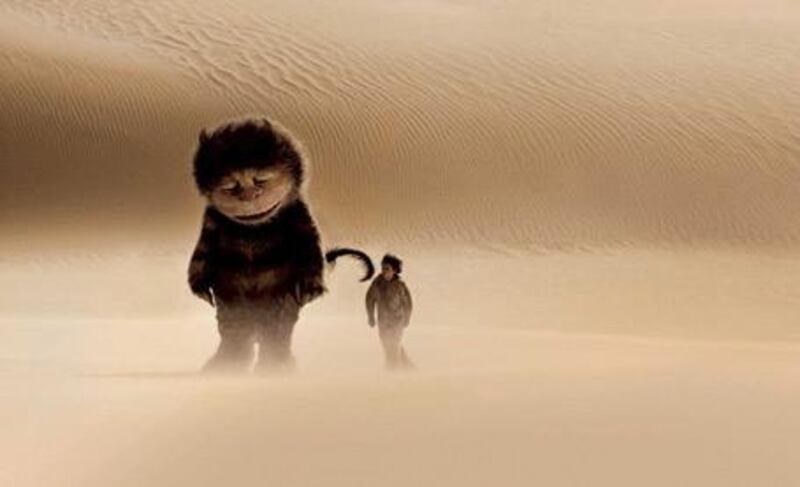Spike Jonze is known for his ability to mix genres and to surprise, but making an art-house film for children turns out to be over-ambitious, even for the creator of Being John Malkovich. The advantage of adapting Maurice Sendak's slim tome is that there is plenty of scope for interpretation; however, for the first time in his career, Jonze comes up short in the imagination department.
For readers not familiar with the book, Max is a naughty boy who gets sent to bed without his supper. He imagines that his bedroom turns into a forest where big, fluffy creatures live in a Wizard of Oz-type mélange of fantasy and fiction. These creatures adore Max and name him their king, and there is much wordless frolicking, before the boy starts missing his mum. Amateur psychologists have for years had a field day with the idea that the creatures are embodiments of the child's inner emotions and that the wild things in life pretty much always live in the mind.
The lack of details in the book gives plenty of scope for Jonze and his co-writer, Dave Eggers - the author of the autobiographical brotherly love tale A Heartbreaking Work of Staggering Genius - to create Max's real and imagined worlds. It is unfortunate that they decided to make Max come from a single-parent family, because broken homes are a cliché of American cinema, especially the independent sector. Every film has at least one and the children always suffer.
On the day Max (Max Records) has his adventure, his mother (Catherine Keener) is making dinner for her new boyfriend (Mark Ruffalo). Max is acting-up because he feels his sister (Pepita Emmerichs) has let him down in a snowball fight. It means that when Max enters the fantasy world and the creatures are given distinct psychological profiles, it is all too simple to put his inner turmoil down to family circumstances rather than the growing pains of a child going through the inevitable rebellious stage.
So, despite its greater word count and length, the film is less complex and insightful than the book. However, the monsters themselves, created using a mix of puppetry costumes, animatronics and CGI, do look magnificent. There is a visceral component to the film that emphasises the mundane and the ordinary so the oversized teddy-bear look of the creatures seems fitting. Unfortunately, their personalities, from the impulsive and charismatic Carol (voiced by James Gandolfini) to the loner KW (Lauren Ambrose) are predictable stereotypes. The story, in which the monsters want to build a new home but cannot overcome their own arguments and prejudices, is heavy-handed and - in a word I never thought I'd use to describe a Jonze work - obvious.
There are lots of mundane moments in which not much happens, with a few cutesy jokes thrown in to appease younger members of the audience, and Karen O's whining soundtrack is straight out of the 1990s. For the first time in his hitherto brilliant career, Jonze shows signs of losing touch with the zeitgeist.











